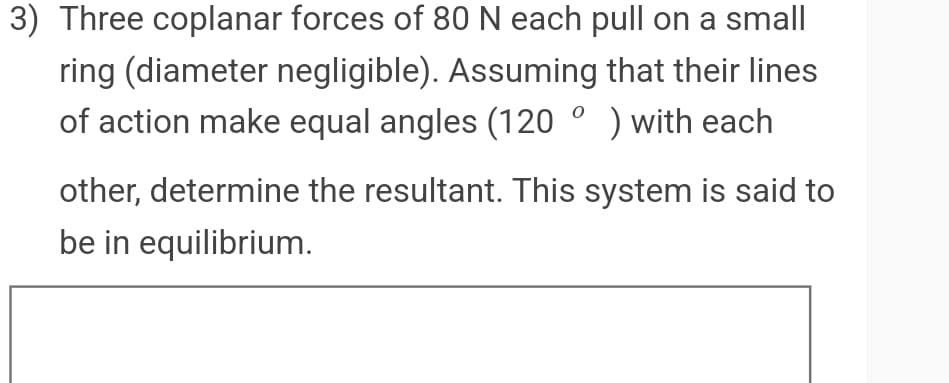Three coplanar forces of 80 N each pull on a small ring (diameter negligible). Assuming that their lines of action make equal angles (120 degrees) with each other, determine the re... Three coplanar forces of 80 N each pull on a small ring (diameter negligible). Assuming that their lines of action make equal angles (120 degrees) with each other, determine the resultant. This system is said to be in equilibrium.

Understand the Problem
The question describes a scenario with three coplanar forces acting on a ring, each with a magnitude of 80 N. These forces are equally spaced at 120-degree angles from each other. The objective is to find the resultant force of this system, and it's stated that the system is in equilibrium.
Answer
$0 \, \text{N}$
Answer for screen readers
$0 , \text{N}$
Steps to Solve
- Recognize the equilibrium condition
Since the problem states the system is in equilibrium, the resultant force is zero. Equilibrium means all forces balance each other out. 2. Final Answer
Given the forces are in equilibrium, the resultant force is $0 , \text{N}$.
$0 , \text{N}$
More Information
When forces pulling on an object result in no net force and no acceleration, the object is said to be in equilibrium. In this specific case, the three forces of equal magnitude ($80 , \text{N}$), equally spaced at $120^\circ$ angles, perfectly balance each other.
Tips
A common mistake is to try to calculate the resultant force by vector addition without recognizing the equilibrium condition. Vector addition is unnecessary here because the problem states that the system is in equilibrium.
AI-generated content may contain errors. Please verify critical information